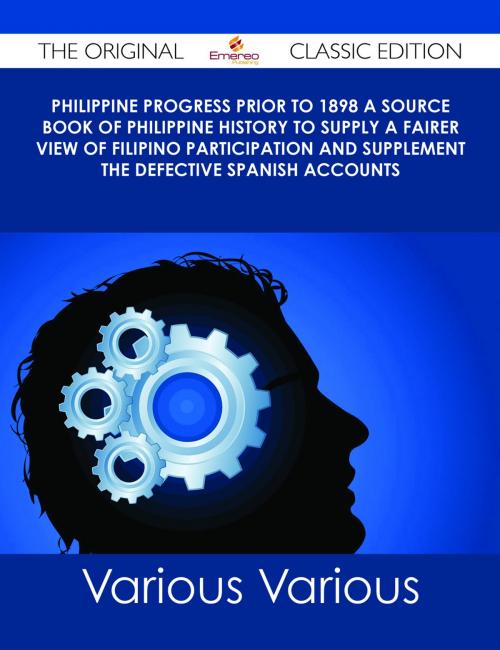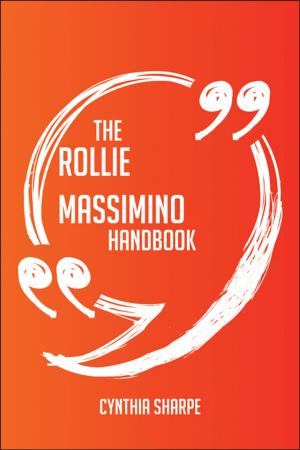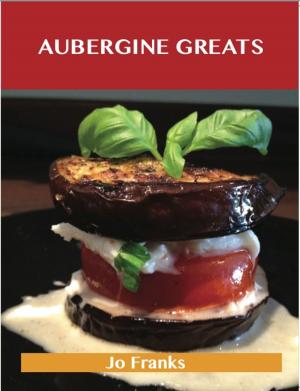Philippine Progress Prior to 1898 A Source Book of Philippine History to Supply a Fairer View of Filipino Participation and Supplement the Defective Spanish Accounts - The Original Classic Edition
Nonfiction, Reference & Language, Reference, Fiction & Literature| Author: | Various | ISBN: | 9781486492794 |
| Publisher: | Emereo Publishing | Publication: | March 10, 2013 |
| Imprint: | Emereo Publishing | Language: | English |
| Author: | Various |
| ISBN: | 9781486492794 |
| Publisher: | Emereo Publishing |
| Publication: | March 10, 2013 |
| Imprint: | Emereo Publishing |
| Language: | English |
Finally available, a high quality book of the original classic edition of Philippine Progress Prior to 1898 A Source Book of Philippine History to Supply a Fairer View of Filipino Participation and Supplement the Defective Spanish Accounts. It was previously published by other bona fide publishers, and is now, after many years, back in print.
This is a new and freshly published edition of this culturally important work by Various Various, which is now, at last, again available to you.
Get the PDF and EPUB NOW as well. Included in your purchase you have Philippine Progress Prior to 1898 A Source Book of Philippine History to Supply a Fairer View of Filipino Participation and Supplement the Defective Spanish Accounts in EPUB AND PDF format to read on any tablet, eReader, desktop, laptop or smartphone simultaneous - Get it NOW.
Enjoy this classic work today. These selected paragraphs distill the contents and give you a quick look inside Philippine Progress Prior to 1898 A Source Book of Philippine History to Supply a Fairer View of Filipino Participation and Supplement the Defective Spanish Accounts:
Look inside the book:
Naturally the first plants introduced were those of the Malayan region that were familiar to the original invaders or their successors in western Malaya, and these include such species as Job’s tears (Coix lachryma-jobi L.), the more common form of use for ornamental purposes, another form cultivated for food; sugar cane (Saccharum officinarum L.), as a source of sugar; lemon grass (Andropogon citratus DC), used as a condiment; vetiver (Andropogon zizanioides Urb.), for its aromatic root; sorghum (Andropogon sorghum L.), for food; Italian millet (Setaria italica Beauv.), for food; rice (Oryza sativa L.), for food; bamboos (Bambusa vulgaris Schrad., and B. blumeana Schultes), for purposes of construction; coconut (Cocos nucifera L.), for food (this species is unquestionably of American origin, but reached the Orient long before the advent of Europeans); betel-nut palm (Areca catechu L.), for its stimulating properties; sweet flag (Acorus calamus L.), medicinal; taro (Colocasia esculentum Schott), food; yam, “ubi” (Dioscorea alata L.), for food; garlic (Allium sativum L.), for food; various varieties of the banana (Musa paradisiaca L.), for food; various zingiberaceous plants (Kaempferia galanga L., Curcuma zedoaria L., C. longa L., Zingiber zerumbet Sm., and Z. officinale Rosc), for condiments, etc.; betel-pepper (Piper betel L.) for use with the betel-nut for chewing; bread fruit (Artocarpus communis Forst.), and the jak fruit (A. integrifolia L. f.), for food; amaranths (Amaranthus gangeticus L., A. caudatus L.), for ornamental purposes and food; “libato” (Basella rubra L.), for food; champaca (Michelia champaca L.), for its fragrant flowers (this may have been introduced later by the Spaniards); siempre viva (Bryophyllum pinnatum Kurz), for medical purposes; horse radish tree (Moringa oleifera Lam.), for food and medicine; sappan (Caesalpinia sappan L.), for dyeing; the tamarind (Tamarindus indica L.), for food; indigo (Indigofera tinctoria L.), for dye; “caturay” (Sesbania grandiflora Pers.), for its edible flowers and its resinous exudation; the pigeon pea (Cajanus cajan Merr.), for food; the cow pea (Vigna sesquipedalis L.), for food; the asparagus pea (psophocarpus tetragonolobus DC.), for food; “batao” (Dolichos lablab L.), for food; the mungo (Phaseolus radiatus L.), for food; various citrus fruits, such as the pomelo (Citrus decumana Murr.), the lime (C. lima Lunan.), and varieties of the orange (C. aurantium L.), for food; the santol (Sandoricum koetjape Merr.), for food; the lansone (Lansium domesticum Jack), for food; some euphorbias (E. tirucalli L.), for medicine; “iba” (Cicca disticha L.), for food; crotons (Codiaeum variegatum Blume), for ornamental purposes; castor oil plant (Ricinus communis L.), for medicine; croton oil plant (Croton tiglium L.), for medicine and for poiso
Finally available, a high quality book of the original classic edition of Philippine Progress Prior to 1898 A Source Book of Philippine History to Supply a Fairer View of Filipino Participation and Supplement the Defective Spanish Accounts. It was previously published by other bona fide publishers, and is now, after many years, back in print.
This is a new and freshly published edition of this culturally important work by Various Various, which is now, at last, again available to you.
Get the PDF and EPUB NOW as well. Included in your purchase you have Philippine Progress Prior to 1898 A Source Book of Philippine History to Supply a Fairer View of Filipino Participation and Supplement the Defective Spanish Accounts in EPUB AND PDF format to read on any tablet, eReader, desktop, laptop or smartphone simultaneous - Get it NOW.
Enjoy this classic work today. These selected paragraphs distill the contents and give you a quick look inside Philippine Progress Prior to 1898 A Source Book of Philippine History to Supply a Fairer View of Filipino Participation and Supplement the Defective Spanish Accounts:
Look inside the book:
Naturally the first plants introduced were those of the Malayan region that were familiar to the original invaders or their successors in western Malaya, and these include such species as Job’s tears (Coix lachryma-jobi L.), the more common form of use for ornamental purposes, another form cultivated for food; sugar cane (Saccharum officinarum L.), as a source of sugar; lemon grass (Andropogon citratus DC), used as a condiment; vetiver (Andropogon zizanioides Urb.), for its aromatic root; sorghum (Andropogon sorghum L.), for food; Italian millet (Setaria italica Beauv.), for food; rice (Oryza sativa L.), for food; bamboos (Bambusa vulgaris Schrad., and B. blumeana Schultes), for purposes of construction; coconut (Cocos nucifera L.), for food (this species is unquestionably of American origin, but reached the Orient long before the advent of Europeans); betel-nut palm (Areca catechu L.), for its stimulating properties; sweet flag (Acorus calamus L.), medicinal; taro (Colocasia esculentum Schott), food; yam, “ubi” (Dioscorea alata L.), for food; garlic (Allium sativum L.), for food; various varieties of the banana (Musa paradisiaca L.), for food; various zingiberaceous plants (Kaempferia galanga L., Curcuma zedoaria L., C. longa L., Zingiber zerumbet Sm., and Z. officinale Rosc), for condiments, etc.; betel-pepper (Piper betel L.) for use with the betel-nut for chewing; bread fruit (Artocarpus communis Forst.), and the jak fruit (A. integrifolia L. f.), for food; amaranths (Amaranthus gangeticus L., A. caudatus L.), for ornamental purposes and food; “libato” (Basella rubra L.), for food; champaca (Michelia champaca L.), for its fragrant flowers (this may have been introduced later by the Spaniards); siempre viva (Bryophyllum pinnatum Kurz), for medical purposes; horse radish tree (Moringa oleifera Lam.), for food and medicine; sappan (Caesalpinia sappan L.), for dyeing; the tamarind (Tamarindus indica L.), for food; indigo (Indigofera tinctoria L.), for dye; “caturay” (Sesbania grandiflora Pers.), for its edible flowers and its resinous exudation; the pigeon pea (Cajanus cajan Merr.), for food; the cow pea (Vigna sesquipedalis L.), for food; the asparagus pea (psophocarpus tetragonolobus DC.), for food; “batao” (Dolichos lablab L.), for food; the mungo (Phaseolus radiatus L.), for food; various citrus fruits, such as the pomelo (Citrus decumana Murr.), the lime (C. lima Lunan.), and varieties of the orange (C. aurantium L.), for food; the santol (Sandoricum koetjape Merr.), for food; the lansone (Lansium domesticum Jack), for food; some euphorbias (E. tirucalli L.), for medicine; “iba” (Cicca disticha L.), for food; crotons (Codiaeum variegatum Blume), for ornamental purposes; castor oil plant (Ricinus communis L.), for medicine; croton oil plant (Croton tiglium L.), for medicine and for poiso















